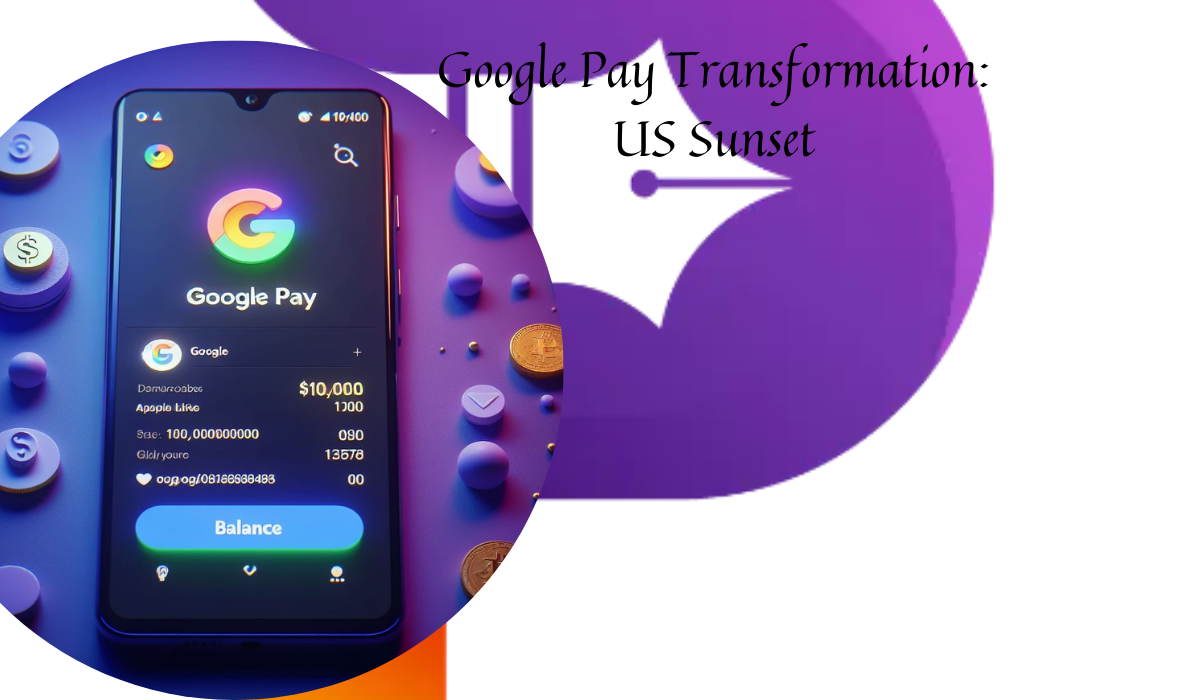
As the digital payments landscape continues to evolve, Google is streamlining its offerings, with significant changes planned for Google Pay, particularly in the United States and India. While the app might be “dying” in the US as we know it, this move paves the way for a more unified experience and opens doors for future innovations, especially in markets like India.
Contents

Understanding the US Shift: Google Pay Sunsets on June 4, 2024
On June 4, 2024, the standalone Google Pay app will cease to function in the United States. This doesn’t signify the end of Google’s involvement in mobile payments; instead, it marks a shift towards Google Wallet as the primary platform for all payment-related functionalities.
Here’s a breakdown of what this means for US users:
- Functionality Transfer: Features like storing credit and debit cards for tap-to-pay transactions will seamlessly transition to Google Wallet.
- Farewell to Features: P2P (peer-to-peer) payments, managing account balance, and in-app deals offered by Google Pay will no longer be available. Users can find deals directly through Google Search.
- Funds Transfer: Until June 4, users can transfer any remaining balance in their Google Pay account to a linked bank account. After that, the Google Pay website will remain operational for managing and transferring funds.
This decision stems from Google’s desire to simplify its payment offerings in the US, where Google Wallet already enjoys significant traction. By consolidating functionalities, Google aims to streamline the user experience and potentially bolster Google Wallet’s adoption.

Google Pay in India: Alive and Kicking, but Changes are Coming
While the US undergoes this transformation, Google Pay in India remains unaffected. The app continues to be the dominant player in the Indian mobile payments market, facilitating UPI (Unified Payments Interface) transactions and offering a plethora of features like bill payments, recharges, and investments.
However, Google has hinted at upcoming changes specifically for the Indian market, without divulging the specifics. These changes could potentially involve:
- Feature Enhancements: Google might introduce new features or functionalities tailored to the unique needs of the Indian market.
- Integration with Google Wallet: While Google Pay remains independent for now, a future integration with Google Wallet cannot be ruled out entirely. This could create a unified experience across different regions.
It’s important to note that these are merely speculations based on Google’s statements and the evolving digital payments landscape. Google has not officially announced any concrete plans for Google Pay in India.
Unveiling the Why: Reasons Behind Google’s Decisions
Understanding Google’s motivations behind these changes can offer valuable insights:
- Market Saturation: In the US, Google Pay faced stiff competition from established players like Apple Pay. By consolidating functionalities into Google Wallet, Google might be aiming to strengthen its position in a saturated market.
- Streamlining User Experience: Offering multiple payment apps can lead to confusion and inconvenience for users. By focusing on a single platform (Google Wallet) in the US, Google aims to simplify the user experience.
- Focusing on Growth Markets: India, with its booming digital payments ecosystem, presents a significant opportunity for Google. By tailoring Google Pay specifically to the Indian market, Google can solidify its position in this crucial region.
It’s also worth noting that Google Pay’s success in India likely played a role in the decision to keep it operational there. The app has become deeply integrated into the daily lives of millions of Indians, making it a valuable asset for Google in this key market.
Impact and Future Implications: What Does This Mean for Users?
While the impact of these changes varies depending on the region, here’s a broad overview:
- US Users: They will need to transition to Google Wallet for all their mobile payment needs. While core functionalities remain, features like P2P payments and in-app deals will be absent.
- Indian Users: Google Pay continues to operate as usual for now, but upcoming changes are expected. These changes could potentially enhance the app’s functionality or integrate it with Google Wallet, but concrete details are still unknown.
Looking ahead, these developments signal Google’s commitment to the ever-evolving mobile payments landscape. By adapting its strategies to different market dynamics, Google aims to maintain its competitive edge and cater to the diverse needs of users worldwide.
FAQs: Addressing Common Questions
- Will I lose my money when Google Pay sunsets in the US?
- No. You can transfer any remaining balance in your Google Pay account to a linked bank account before June 4, 2024. After that, the Google Pay website will allow you to manage and transfer funds.
- Can I still use Google Pay for contactless payments in the US after June 4th?
- Yes, contactless payments using credit and debit cards stored in Google Wallet will continue to function as usual. Google Wallet seamlessly integrates this functionality, allowing users to tap their phone at contactless payment terminals.
- What happens to my loyalty cards and offers stored in Google Pay?
- Unfortunately, loyalty cards and offers stored in Google Pay will no longer be accessible after June 4th. These features are not currently available in Google Wallet, so users will need to find alternative ways to manage them.
- What alternatives do I have for P2P payments in the US after Google Pay sunsets?
- Several options exist for P2P payments in the US, including:
- Venmo: A popular P2P payment service, offering social features and a user-friendly interface.
- Cash App: Another popular option with features like investing and debit card issuance.
- Zelle: A bank-backed P2P payment network available through many participating banks’ mobile banking apps.
- Apple Pay Cash: Available to iPhone users for P2P transactions within the Apple ecosystem.
- Several options exist for P2P payments in the US, including:
- What changes can I expect for Google Pay in India?
- As of now, Google hasn’t revealed specific details about upcoming changes for Google Pay in India.
Conclusion: A Strategic Shift and a Glimpse into the Future
Google’s evolving approach to mobile payments with Google Pay’s sunset in the US and potential changes in India reflects the company’s strategic adaptation to diverse market dynamics. In the US, the goal is to simplify the user experience through a unified platform (Google Wallet). Meanwhile, Google recognizes the immense potential of the Indian market and intends to tailor its offerings accordingly, with specifics still under wraps.
This evolution highlights the dynamic nature of the mobile payments landscape. As technology advances and user needs evolve, adaptability and innovation will be key for companies like Google to maintain their competitive edge. Whether through streamlining existing platforms or introducing new functionalities, the future holds exciting possibilities for the way we manage our money and make payments, particularly in rapidly developing economies like India.
It remains to be seen how Google Pay transforms in India, but one thing is certain: the journey towards a more seamless and secure digital payments experience continues to unfold.





